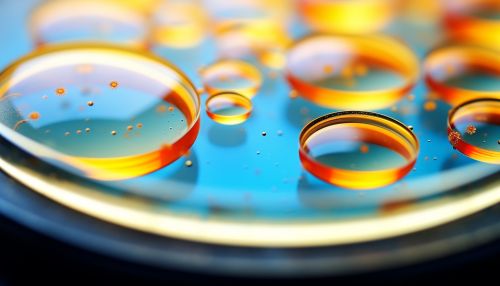Antibiotic resistance
Introduction
Antibiotic resistance is a global health concern that occurs when bacteria change in response to the use of antibiotics. These bacteria may infect humans and animals, and the infections they cause are harder to treat than those caused by non-resistant bacteria. Antibiotic resistance leads to higher medical costs, prolonged hospital stays, and increased mortality.
Mechanisms of Antibiotic Resistance
Bacteria can develop resistance to antibiotics through several mechanisms. The most common are genetic mutation and acquiring resistance from another bacterium.
Genetic Mutation
Genetic mutations are random changes in the bacteria's genetic material. When a bacterium replicates, it might make a mistake in copying its DNA, leading to a mutation. If this mutation makes the bacterium less susceptible to an antibiotic, it will have a survival advantage and can multiply rapidly, spreading the resistance trait.
Acquiring Resistance
Bacteria can also acquire antibiotic resistance from other bacteria. This can occur through horizontal gene transfer, where resistance genes are passed from one bacterium to another. This can happen in several ways, including transformation, transduction, and conjugation.
Spread of Antibiotic Resistance
Antibiotic resistance can spread in various environments, such as hospitals, communities, and farms. The overuse and misuse of antibiotics are key factors in the development and spread of antibiotic-resistant bacteria.
In Hospitals
Hospitals are a common source of antibiotic-resistant bacteria. Patients with weakened immune systems are more susceptible to infections and, therefore, require more antibiotics. This high use of antibiotics can lead to the development of resistant bacteria.
In Communities
In the community, antibiotic resistance can spread through people not taking antibiotics as prescribed, such as not finishing a course of treatment or using leftover antibiotics. This improper use can lead to the development and spread of resistant bacteria.
On Farms
On farms, antibiotics are often used in livestock to prevent disease and promote growth. This can lead to the development of antibiotic-resistant bacteria, which can spread to humans through the food chain.
Impact of Antibiotic Resistance
The impact of antibiotic resistance on global health is significant. It can lead to higher healthcare costs, more severe illness, and increased mortality.
Healthcare Costs
The cost of treating antibiotic-resistant infections is higher than treating non-resistant infections. This is due to longer hospital stays, more intensive care, and the need for more expensive antibiotics.
Severity of Illness
Antibiotic-resistant infections are often more severe than non-resistant infections. They can cause longer illnesses, more doctor visits, and a greater risk of death.
Increased Mortality
Antibiotic resistance can lead to increased mortality. According to the World Health Organization, antibiotic-resistant infections cause at least 700,000 deaths each year worldwide. This number could increase to 10 million by 2050 if no action is taken.
Preventing Antibiotic Resistance
Preventing antibiotic resistance requires a coordinated effort from all sectors of society. Key strategies include prudent use of antibiotics, infection prevention and control, and research and development.
Prudent Use of Antibiotics
Prudent use of antibiotics involves using them only when necessary and following the prescribed treatment. This can help to reduce the development and spread of antibiotic-resistant bacteria.
Infection Prevention and Control
Infection prevention and control measures, such as hand hygiene and vaccination, can reduce the need for antibiotics by preventing infections from occurring in the first place.
Research and Development
Research and development are crucial for addressing antibiotic resistance. This includes developing new antibiotics, alternative treatments, and rapid diagnostic tests.
See Also


